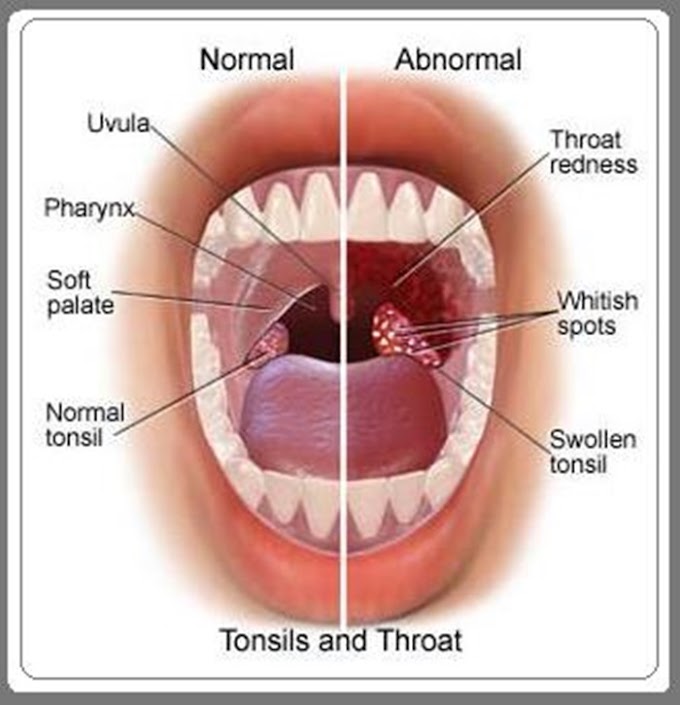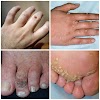SYMPTOMS
Pain is noted
down the back of the thigh, the outer side of the calf. Perhaps it is along the
outer side of the foot, on the top of the foot that is in line with the big
toe. The person compensates by placing more weight on the other leg and foot.
The pain is often worse at night. Coughing, walking, heavy labor or sneezing
increases both the pain in the back and in the sciatic nerve.
Later still, the area, where the pain may be
felt, may feel numb when the hand is rubbed over it.
Still later, a wasting of the muscles of the
calf and a weakness in running and even walking may be noticed.
CAUSES
The sciatic
nerve is the largest nerve in the body. This nerve comes out of the spine. A
branch of this runs down each leg, along the back of the thigh of each leg, and
down the inside of the leg to the ankle.
There are two
primary causes of sciatica:
The first is chilling the thigh over a lengthy period of time. Sciatica usually
begins as neuralgia of the sciatic nerve. If you sit on cold surfaces a lot (steel-folding chairs in cool rooms,
steel-tree chairs while hunting, or steel-boat seats while fishing, etc.) For
lengthy periods of time, you can irritate the sciatic nerve and produce
sciatica. A less recognized example is sitting on deep foam cushions, which
never sufficiently warm up, for hours while watching exciting television dramas
that cause you to be tense.
Fortunately, this form of sciatica is rather
easy to solve: Apply neuralgia-type treatments; and only sit on warm surfaces or
surfaces your body can heat relatively easily. Do not use chairs with foam that
are too deep to easily warm up within a short time (say, 8 inches).
On your favorite chairs, place a folded,
wool blanket or piled thinner blanket. That is something you can warm up.
Experiment and see what works best for you. If your body does not begin warming
it up in a few minutes, lay something down that will.
Unfortunately, there is a second, and much
more serious, cause:
The second cause of sciatica is damage to the lower spine. There may be a history of an accident, a fall, the lifting of a
heavy weight, or a twist under some tension. Some men derange their lower back
by the simple method of always carrying a thick
wallet in one of the back pockets of their pants. The mechanical vibration of long hours behind the
wheel of a car or truck, or work requiring repetitive lifting, may bring on sciatic attacks.
It is significant that the pain is first
felt in the lower back. Later (weeks or even years later) pain begins to be
felt at one or more places along the entire course of the sciatic nerve-back of
the thigh, outer side of the calf, or in the top of the foot to the big toe.
One of the cartilaginous plates (disks, also
spelled discs) in the lumbar region of the lower back has been damaged. The
cartilage bulges and later breaks, creating pressure backward against a nerve
root. (It is also possible for a tumor to develop and press against the sciatic
nerve; but this is far less likely.)
Other important facts are these: (1) The
person probably was not maintaining a nourishing
diet, with supplemental calcium,
magnesium, vitamin D, and other bone-building factors. (2) He may have been
over working his body in running, weight lifting, etc. (3) He was not lifting
objects properly. (4) He was working at an occupation such as lifting heavy
patients in a nursing home, which can be hazardous.
In older people who do not obtain enough
bone building materials in their diet, degenerative problems can occur in newly
formed spicules, or ridges, of bone. These may press on a nerve root.
NATURAL REMEDIES
- Read again the above causal factors and try to correct those which apply you.
- Rest the painful limb in as comfortable a position as possible.
HYDROTHERAPY
- For pain in the leg from the sciatica: Apply hot, wet applications to the affected leg, for the relief of pain and inflammation.
- For pain in the back: At the onset of a back attack, apply an application of ice for 10-20 minutes. This will deaden pain, relieve spasms, and minimize swelling.
- For the sciatica in the leg, give prolonged applications of dry heat in any form (hot-water bottles, radiant heat, or electric heating pads).
- Apply heat in form of hot fomentations, 3 times a day, omitting any use of ice or cold water.
- After each application of heat, rub the limb to increase circulation.
- Add 2 cups of salt to a boiling quart of water. When quite warm, apply with a cloth to the affected area until relief comes.
STRETCHING EXERCISES
·
Carefully
apply stretching exercises; but
always stop before there is pain or becomes too uncomfortable. Do each exercise
3 times, 2-3 times a day, increasing the number as improvement occurs.
·
Pull the knees up as close to the chin as possible. You
will feel a pulling sensation in the lower back.
·
Sitting
in a chair, reach down under it as
far, as possible, and bend from the hip only.
·
While
lying on the back, the leg is raised
with the knee straight. Someone else raises the leg, bending it from the hip
only. This stretches the nerve and the hamstring muscles.
OTHER HELPS
·
If
the attack of pain lasts so long that the leg muscles have lost considerable
strength, massage and a daily hot and
cold leg bath (cold after the painful period is over) will help to restore
circulation and strength.
·
There
are times when a back adjustment
helps. If the back is out of adjustment, pain can occur. You will want to weigh
this possibility carefully before doing it.
·
Fast one day a week and eat only raw food for a month.
·
Have
a good foot massage every 3 days and especially around the Achilles tendons, up
the back of the ankles.
·
Get
fresh air, sunlight, and (if
possible) moderate exercise.
·
Low-impact
activities like swimming and walking
are good for the back. But jogging, jumping or twisting can damage bones and
muscles. Gradually build stronger muscles and bones, without pain.
HERBS
·
Dang quai, the herb that is so helpful for
female problems, is also good for sciatica.
·
Willow bark contains salicin, which effectively
relieves pain. Begin with a low dose of ½ tsp. of dried herb; and gradually
increase it until you have effective pain relief. But long-term use can cause
stomach distress and even ulcers.
·
Take
wintergreen internally, and apply it
externally to the painful area. It contains methyl salicylate (similar to
salicin, above).
·
Mix
2 Tbsp. grated ginger with 3 Tbsp. sesame oil and 1 tsp. lemon
juice. Rub this into the painful area. This remedy has been used in Egypt for
centuries.
Compress of Mistletoe
leaves alleviate sciatic pains.







1 Comments
Thanks for sharing great article about herbal dietary supplements for piles. Cureveda is the best brand provides world Class Unique Ayurvedic Treatment of Piles and main thing they are using premium types of herbal and natural supplements.
ReplyDelete